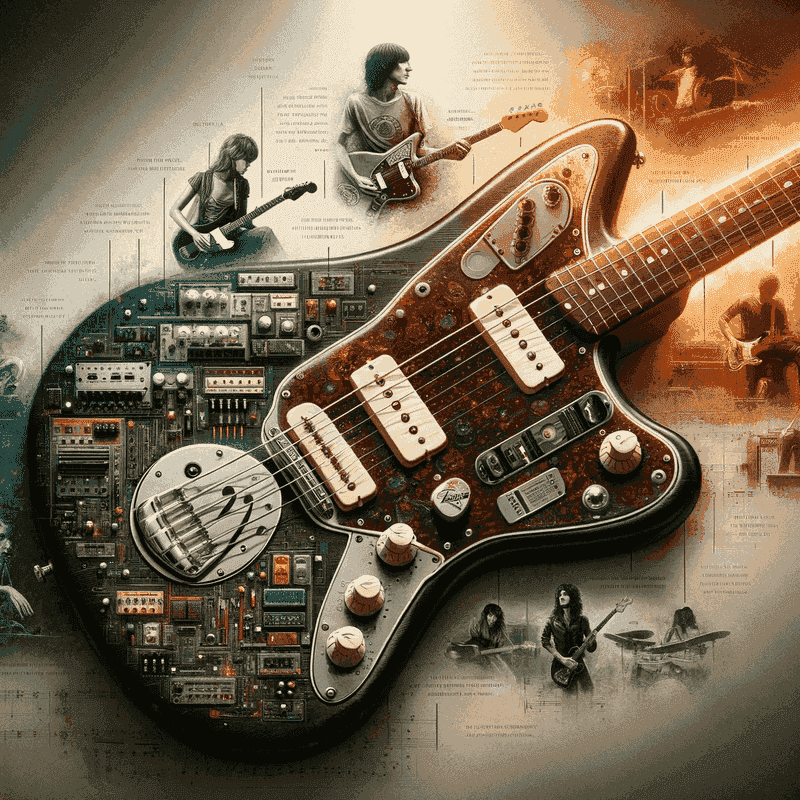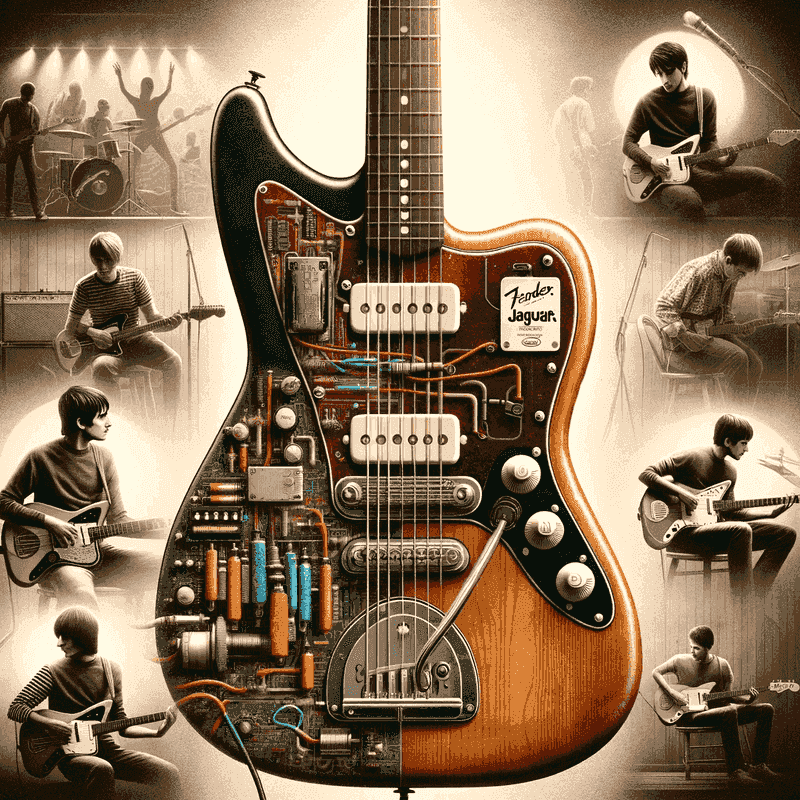The Resale Value of Fender Jaguars
Explore the historical significance, unique features, and factors influencing the resale value of Fender Jaguars.
Introduction
The Fender Jaguar, an iconic guitar with an extraordinarily rich history and highly distinctive features that set it apart from all other Fender models, has experienced dramatically varying levels of popularity, cultural significance, and market demand since its groundbreaking inception in 1962. This comprehensive article explores the complex and multifaceted factors that contribute to its resale value, market appreciation, and collectible status over the decades, providing valuable insights for both current owners and prospective buyers.
Understanding the Jaguar's unique position in the guitar market requires examining its technical innovations, cultural impact, and the various factors that influence its desirability among collectors, professional musicians, and vintage guitar enthusiasts worldwide.
The History and Significance of the Fender Jaguar
Introduced in 1962, the Fender Jaguar was the last addition to Fender’s original standard guitar lineup, following the Telecaster, Stratocaster, and Jazzmaster. Initially adopted by surf guitarists, its popularity waned until the punk era of the '70s, which marked the beginning of its resurgence as an iconic instrument.
Unique Features of the Jaguar
The Jaguar boasted a shorter 24-inch scale length and 22 frets, designed for "faster, more comfortable" playing. It featured an offset body, separate bridge and floating vibrato units, and the most elaborate circuitry among Fender instruments, including dual-circuit guitars (lead and rhythm), high-output pickups surrounded by notched metal rings, and a variety of neck widths.
Resurgence and Modern Popularity
The Jaguar's popularity soared in the early 1990s, thanks in part to Kurt Cobain's preference for the model. Fender Japan’s resurrection of the Jaguar in the 1980s and its continuous production of high-quality reissue models played a significant role in its sustained popularity. In 1999, Fender resumed domestic production with the American Vintage series '62 Jaguar, marking the first U.S.-made Jaguar model in nearly 25 years.
Innovations and Recent Developments
The early and mid-2000s witnessed a concentrated burst of Jaguar activity, including the introduction of the Squier Jagmaster, the Kurt Cobain-inspired Fender Jag-stang, and various innovative takes on the Jaguar. Notable developments included the Jaguar Bass in 2006 and the introduction of the Fender Classic Player series Jaguar Special models, showcasing the brand's continuous innovation and adaptation to modern music trends.
Market Analysis and Investment Potential
The contemporary Fender Jaguar market demonstrates significant complexity, with values varying dramatically based on specific model years, manufacturing origins, condition, and provenance. Vintage American-made Jaguars from the 1960s command premium prices, particularly those with original finishes, hardware, and electronics. The transition from American to Japanese production in the 1980s created distinct market segments, with Japanese-made reissues gaining recognition for their exceptional quality and attention to detail.
Modern market trends show increasing appreciation for specific Jaguar variants, including artist signature models, limited editions, and Custom Shop creations. The influence of contemporary artists and the ongoing indie/alternative music movements continues to drive demand, particularly among younger musicians seeking authentic vintage tones and distinctive aesthetics.
Factors Affecting Resale Value
Several critical factors significantly impact Jaguar resale values: original condition and authenticity play paramount roles, with unmodified examples commanding premium prices. The presence of original cases, documentation, and provenance can substantially increase value. Specific color combinations and limited production runs often appreciate more rapidly than standard models.
Manufacturing quality differences between various production eras affect market perception and pricing. The reputation of specific manufacturing facilities, such as the renowned Fujigen factory in Japan, influences collector preferences and market values. Understanding these nuances is essential for both buyers and sellers in the vintage guitar market.
Maintenance and Value Preservation
Proper maintenance and storage significantly impact long-term value retention. Original finish preservation, hardware maintenance, and electronic component care are crucial for maintaining investment potential. Professional setup and maintenance services can enhance both playability and resale value, while improper modifications or repairs can substantially decrease market appeal.
Climate-controlled storage, appropriate case selection, and regular professional inspections help preserve both the instrument's condition and its investment value. Documentation of maintenance history and any professional work performed can positively influence resale negotiations.
Future Market Outlook
The Fender Jaguar's market outlook remains positive, driven by continued cultural relevance, limited vintage availability, and growing appreciation among collectors. The instrument's association with influential artists and its distinctive voice in contemporary music production suggest sustained demand. Limited production runs and anniversary editions continue to generate collector interest and market activity.
Understanding generational preferences and emerging musical trends provides insight into future market directions. The Jaguar's unique aesthetic and tonal characteristics position it well for continued appreciation among discerning musicians and collectors.
Conclusion
The Fender Jaguar's remarkable journey from an innovative surf music staple to a revered punk icon and beyond clearly highlights its exceptional adaptability, enduring appeal, and significant cultural impact across multiple musical genres and generations. Understanding its complex history, unique technical features, distinctive aesthetic qualities, and the various cultural and market trends influencing its ongoing demand provides invaluable insights into its resale value, investment potential, and enduring legacy as a true Fender classic.
The Jaguar's position in the vintage guitar market reflects both its historical significance and its continued relevance in contemporary music, making it a compelling choice for both players and collectors seeking instruments with both musical merit and investment potential. Discover more about Jaguar guitars in our Jaguar Hub.
Frequently Asked Questions (FAQ)
1. Which Fender Jaguar models have the highest resale value?
Answer: Vintage American-made Jaguars from the 1960s typically command the highest resale values, especially those from 1962-1965. The original 1962 model and early CBS-era instruments are particularly sought after. Among modern instruments, American Professional and American Ultra Jaguars tend to hold their value best, while Japanese-made models offer excellent value retention in the mid-range market.
2. How much should I expect a vintage Fender Jaguar to appreciate in value?
Answer: Vintage Jaguars have shown steady appreciation over the past decade, typically gaining 3-7% annually depending on condition and year. Pre-CBS models (1962-1965) have seen the strongest growth, while CBS-era instruments (1965-1985) are beginning to appreciate more rapidly as they reach vintage status. Market conditions, rarity, and condition significantly impact individual appreciation rates.
3. What factors most affect a Fender Jaguar's resale value?
Answer: Key factors include year of manufacture, country of origin, condition, originality of parts, finish type, and provenance. Vintage American models command premiums, while modifications typically decrease value. Rare finishes like Lake Placid Blue or Foam Green can add significant value. Professional setups and proper maintenance help preserve value, while wear, modifications, or replaced parts can reduce it substantially.
4. Are modified Fender Jaguars worth less than original ones?
Answer: Generally, yes. Original, unmodified Jaguars typically command higher resale values, especially vintage models. However, some professional modifications (like upgraded bridges or electronics) may actually enhance playability and value for players, though collectors prefer originality. Reversible modifications have less impact than permanent alterations to the body or neck.
5. How does the Jaguar's resale value compare to Stratocasters and Telecasters?
Answer: Jaguars typically hold their value well but generally don't appreciate as rapidly as vintage Stratocasters or Telecasters due to lower overall demand. However, this creates opportunities for collectors, as Jaguars often represent better value propositions. The gap has been narrowing as alternative and indie music have increased Jaguar popularity.
6. What's the best way to maintain my Jaguar's resale value?
Answer: Keep all original parts (even if upgrading), maintain proper humidity levels, perform regular professional setups, document any work done, store in quality cases, avoid modifications when possible, and keep original paperwork and case candy. Professional cleaning and maintenance preserve both playability and appearance, which are crucial for resale value.
7. Should I buy a Fender Jaguar as an investment?
Answer: While Jaguars can appreciate in value, they should primarily be purchased for playing enjoyment rather than pure investment. Vintage models have shown steady appreciation, but the guitar market can be unpredictable. If considering investment potential, focus on rare models, excellent condition examples, and instruments with historical significance or celebrity provenance.
8. How do I determine the current market value of my Fender Jaguar?
Answer: Research completed sales on eBay, Reverb, and other platforms for similar year, condition, and model guitars. Consult vintage guitar price guides, get professional appraisals for valuable instruments, and consider factors like local market conditions. Remember that asking prices often differ significantly from actual selling prices, so focus on completed transactions.

